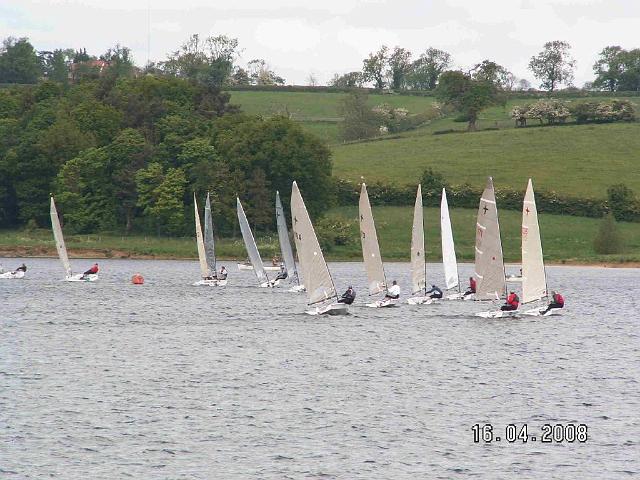The Phantom was designed by Paul Wright and Brian Taylor in 1971. They wanted to produce a single-hander that was exciting to sail, manageable and at the same time affordable to build. It isn't possible to design a boat that will accommodate all weights, even in these days of 'wings' and equalisation systems. As there were already boats on the market for the lighter helms they decided to design a boat that was both comfortable and fast for larger sailors. A Phantom sailor shouldn't weigh less than 10 stone, and is most suitable for those in the weight range of 12 -18 stone(76 -115 Kg). One advantage with the phantom is that both the class association and the designers view the development of the class in a proactive manner always providing that care is taken not to outclass older boats. Latterly the design has been modified to incorporate self draining cockpits and carbon spars. Additionally the design allows freedom in cockpit design and sailors are therefore able to develop cockpit sail and rig control systems that suit their individual requirements.
A one design high performance single-hander the Phantom has a hard chine hull with a deep 'V' bow, a flat run aft, and planes easily. With her lightweight hull and large rig on a stayed mast she has a high power to weight ratio, but is stable and responsive. There is no trapeze or spinnaker and she can carry a wide range of helm weights. The Phantom is suitable for home construction using the stitch and glue method or can be bought professionally built in GRP foam sandwich, or wood.
The Phantom is available in a variety of designs. These are:
Conventional Wooden either with or without a self draining hull
Polyester ( the early Vandercraft Phantoms were constructed using this material)
Composite - GRP or Epoxy hull with wooden decks
Epoxy self draining hull.
| Length Overall | 4.42 metres | 14' 6" |
| Beam | 1.64 metres | 5' 6" |
| Mast Height | 6.1 metres | 20' |
| Sail Area | 9.75 sq metres | 105 sq ft |
| Weight (hull, centreboard & fittings) | 61 kgs | 134.2 lbs |
Portsmouth Yardstick
The PY number of the Phantom has seen a period of change with a big fall in 2013 that is now being corrected . This was partly down to the excellent quality of the sailors now sailing them at club level where the figures are normally derived from, however, a certain amount of the performance gain has come from the improvements in the rig, sails and hulls. The hulls are now consistently "on-weight" (sometimes correctors are fitted to achieve this). The current (2019) Portsmouth Number is now 1002, a large drop from the 1058 it was for years when polyester and wooden boats ruled. It is acknowledged that the older pre-epoxy boats sometimes have a disadvantage compared to the epoxy boats and because of that it is recommended that for older boats (pre-epoxy, i.e. sail number pre-1100) that the boat is raced at 1035, and for those pre-999 the PY is 1047.
Rig & Sails
In addition to conventional alloy rigs, the Phantom may be fitted with a carbon mast and boom which increases power and responsiveness. The Phantom uses a sail with the same area as the Fireball and this huge area combined with the latest materials used in the manufacture of the hull and high tech rig gives the helm a fantastic sailing experience.Various masts and boom combinations are available depending upon helm weight and ability. Traditional masts by Proctor, Wavelength and Superspars are available as well as Carbon masts by Proctor, Superspars, Chipstow & CST. The addition of a carbon mast, whilst not a necessity, does seem to improve boat handling and response to gusts but many association members sail with conventional 'tin' rigs and are very competitive. Carbon booms do seem to have a distinct advantage with the biggest being that it does not hurt as much if it hits you on the head. The Phantom sail has an incredibly powerful leach and the helm can spend much of the time trying to de-power the rig to bring the boat under control. The rig employs an adjustable forestay that allows the mast to be adjusted on the water and this combined with a powerful kicker system and plenty of hiking will make the boat somewhat more forgiving.Sails are available from a variety of manufacturers in Dacron, Kevlar and other materials. Full cut and flat cut sails can be made depending upon helm weight, choice of rig and type of hull.
The Phantom is an outstanding racing machine that is growing in popularity with each passing season. With 65 boats at the last Nationals and with some world class helms being recently recruited to the class we hope that you too will be seduced by the beautiful design and join us.








